- Home
- Louis Sachar
Sideways Arithmetic From Wayside School
Sideways Arithmetic From Wayside School Read online
g
g
To Dan,
who taught me to play chess
when I was six years old
g
.
Contents
.
Chapter 1
Chapter 2
Chapter 3
Chapter 4
Chapter 5
Chapter 6
Chapter 7
Chapter 8
Chapter 9
Hints
Answers
About Louis Sachar
Imprint
g
Chapter 1
Spelling
Sue was very excited to be at Wayside School in Mrs. Jewls’s class! She was surrounded by all the kids she had read about in her favorite book, Sideways Stories from Wayside School. She sat next to Rondi, who really was missing her two front teeth, just like it said in the book.
“Everyone take out your spelling books,” said Mrs. Jewls. “It’s time for arithmetic.”
“Huh?” said Sue. She didn’t know why you’d need spelling books to do arithmetic.
Mrs. Jewls wrote the first problem on the blackboard.
PROBLEM 1
g
g
“How much is elf plus elf?” asked Mrs. Jewls.
They all picked up their pencils and busily tried to figure out the answer. Allison raised her hand.
“Yes, Allison,” said Mrs. Jewls.
“Fool!” Allison declared.
Mrs. Jewls smiled. “Very good,” she said and she wrote the answer on the blackboard under the problem.
g
g
“How foolish,” said Sue.
Yet it wasn’t foolish at all. Each letter in the above problem represents a different number between 0 and 9. The letters remain constant within the problem. For example, if f represented the number 8, then every f in the problem would be replaced by the number 8. But f isn’t 8. Can you figure out what number each letter represents?
g
e = ?llllf = ?lllll = ?llllo = ?
g
An explanation of how to solve this type of problem follows.
g
Explanation
You don’t start at the top. You don’t start at the bottom. You have to look at the whole problem altogether. Then, like a detective, you search for clues.
g
g
The clue to the first problem is the letter f in fool.
g
g
Ignoring the first two columns for now, you see that:
g
g
Therefore f has to represent the number 1. When adding two numbers, the only number you can ever carry is the number 1. You now replace all the f’s in the problem with the number 1.
g
g
Since there are both letters and numbers, be careful that you don’t confuse the number 1 with the letter I, or the number 0 with the letter o. Now, looking at the first column you see that:
g
g
Since you know that 1 + 1 = 2, you can now replace all the letter l’s in the problem with the number 2.
g
g
In the second column you see that 2 + 2 = o. You can now replace all the o’s in the problem with the number 4.
g
g
You now know that e + e = 14. Therefore e must represent the number 7.
g
g
The problem is now complete:
g
e = 7llllf = 1lllll = 2llllo = 4.
g
As you can see, when Mrs. Jewls asks, “How much is elf plus elf?” there is no way you can guess the exact answer she is looking for. You have to wait for someone in her class to give the “answer.” Then you can figure out the numerical answer to the problem. So on the next question when Mrs. Jewls asks, “How much is egg plus egg?” you have to wait until the answer is given in class, and then try to solve the problem.
PROBLEM 2
Mrs. Jewls wrote another problem on the blackboard. “How much is egg plus egg?” she asked.
g
g
“Scrambled or fried?” asked Ron.
“Scrambled,” said Mrs. Jewls.
“Yech, I hate eggs,” said John.
g
g
“Do you have pancakes?” asked Leslie.
Mrs. Jewls looked annoyed. “Don’t talk with your mouth full,” she scolded her.
At last Jason raised his hand. “Egg plus egg equals page,” he announced.
g
g
Sue was very confused. “What page are we on?” she asked. She wasn’t even hungry.
Again, each letter represents a different number. This time, what number does each letter represent?
g
a = ?lllle = ? llllg = ?llllp = ?
g
An explanation of how to solve this problem follows.
g
Explanation
The clue to the second problem is the letter g.
g
g
In the second column you see that g + g = g. At first you might think that g has to equal 0. But in the first column you see that g + g = e. Since every letter has to represent a different number, both e and g can’t represent 0. If you try different numbers you will find that g has to represent 9.
g
g
Therefore e must represent 8, and the rest of the problem is easily solved.
g
g
a = 7lllle = 8llllg = 9llllp = 1
PROBLEM 3
g
“Listen carefully,” said Mrs. Jewls.
“I’m all ears,” said Sue.
“How much is ears plus ears?” asked Mrs. Jewls.
Todd figured out the answer to this one. “Swear!” he exclaimed.
g
g
Todd’s answer was correct but Mrs. Jewls sent him home because you are not allowed to swear in school.
What number did each letter represent?
llll
a = ?lllle = ?llllr = ?lllls = ?llllw = ?
llll
(CLUE Begin by trying to figure out what number the letter s represents. More hints can be found starting on page 81.)
Can you figure out what number each letter represents in the following problems?
PROBLEM 4
g
g
o = ?llllp = ?llllt = ?
Be careful not to confuse the letter o with the number zero.
g
(CLUE Begin by trying to figure out what p must represent.)
PROBLEM 5
g
g
e = ?llllh = ?lllll = ?lllls = ?
g
(CLUE First figure out what e and l must represent, then s.)
PROBLEM 6
g
g
m = ?llllo = ?llllp = ?lllly = ?
g
(CLUE After determining what y represents, determine what two numbers the letter o might represent. Then see which one works.)
PROBLEM 7
g
g
a = ? r = ? s = ? t = ? u = ? y = ?
g
(CLUE Begin by figuring out what number the letter t represents.)
PROBLEM 8
g
g
a = ?lllle = ?lllls = ?
g
(CLUE If you have trouble dealing with subtraction, solve it as an addition problem.)
g
PROBLEM 9
g
g
o = ?llllp = ?lllly = ?
PROBLEM 10
g
g
d = ? e = ? l = ? o = ? s = ? w = ?
g
(CLUE First determine what numbers w, o, and d must represent. Then e.)
PROBLEM 11 – Bonus Problem
g
g
c = ? d = ? e = ? i = ? p = ? s = ?
g
(CLUE What two numbers could i possibly represent? Which one works? Is e even or odd?)
g
Chapter 2
Numbers
Sue was very upset. She had never heard of anybody adding words before. She thought it was the most ridiculous thing she’d ever seen. She would have thought it was funny if it hadn’t upset her so much.
“How much is apples plus oranges?” asked Mrs. Jewls.
Sue couldn’t take it any longer. “Fruit!” she screamed. “You can’t add fruit!”
Everyone stared at her.
Sue sighed. She hadn’t meant to shout so loud. “Everyone knows you can’t add apples and oranges,” she explained.
“Why is that?” asked Mrs. Jewls.
“You’re not supposed to add and subtract words,” said Sue.
Mrs. Jewls was taken aback. She had been adding and subtracting words all her life. “If you can’t add and subtract words,” she said, “what can you add and subtract?”
“Numbers,” said Sue. “Like one plus one.”
“What’s one plus one?” asked Mrs. Jewls.
“Two,” said Sue.
Mrs. Jewls was unsure, but she wrote it on the blackboard.
PROBLEM 12
g
g
“No!” screamed Sue. “You’re not supposed to write the words. You’re supposed to write the numbers.”
“What numbers?” asked Mrs. Jewls.
“One and two,” said Sue.
“But there isn’t a one or two anywhere in the problem,” said Mrs. Jewls.
What number does each letter represent if none of them represents either a 1 or 2?
g
e = ?lllln = ?llllo = ?llllt = ?llllw = ?
g
(CLUE Begin with the letter o. Is it even or odd? What’s the largest number it can be?)
g
g
Everybody in the class was interested in Sue’s unusual arithmetic. “What other problems do you know?” Mrs. Jewls asked her.
“There are millions,” said Sue. “One plus two equals three. Four plus seven equals eleven—”
She was interrupted by the laughter from the rest of the class.
“Five plus two equals seven,” she said.
The class was hysterical.
“Four plus eight equals twelve,” she asserted.
Everyone was laughing so hard that Mrs. Jewls had to ring the cowbell on her desk. “Don’t laugh,” she said. “It’s not nice to laugh at other people’s mistakes.”
“But I wasn’t mistaken,” Sue protested.
“I’m afraid that’s impossible,” said Mrs. Jewls.
If you try to solve the following problems as before, with each letter representing a different number, you will find that each is impossible.
PROBLEM 13
g
g
Why is this impossible?
PROBLEM 14
g
g
Why is this impossible?
PROBLEM 15
g
g
Why is this impossible?
PROBLEM 16
g
g
Why is this impossible?
g
Chapter 3
Pronouns
While the other members of Mrs. Jewls’s class worked on their paragraphs, Mrs. Jewls gave special help to Sue. She started at the very beginning, with the basic fundamentals of arithmetic: pronouns.
PROBLEM 17
“How much is he plus me?” she asked.
Sue was dumbfounded. “I don’t know,” she admitted.
“We,” said Mrs. Jewls.
g
g
Sue studied the problem. In a way, she realized it did make sense. If she and her brother went to the store, she could say, “he and me went to the store,” or “we went to the store.” The grammar wasn’t exactly right but at last something made sense. He plus me did equal we. “I think I understand,” she said.
“That’s wonderful,” said Mrs. Jewls. “Then you can do the next problem. How much is me plus we?”
g
g
“But me is part of we,” said Sue.
“No, me plus we is she,” Mrs. Jewls corrected her.
g
g
Sue stared blankly at the problem.
“Okay,” said Mrs. Jewls. “So how much is he plus we?”
g
g
Sue had no idea. She wondered what kind of stupid answer Mrs. Jewls would come up with.
“Sue,” said Mrs. Jewls.
g
g
“Hey, that’s me!” Sue exclaimed.
Mrs. Jewls sighed. She wondered if Sue would ever learn. The three above problems must be solved together. For example, whatever number h represents in the first problem, it must represent that number in each of the other two problems. The same is true for the other letters. Each letter represents a different number. What number does each letter represent?
g
e = ? h = ? m = ? s = ? u = ? w = ?
g
(CLUE Although it is easy to determine what numbers e and s represent, it doesn’t seem all that helpful. The key is figuring out what number m represents.)
PROBLEM 18
“All right, Sue,” said Mrs. Jewls. “This is your last chance. If you can’t answer this problem you’ll have to go back to your old school.”
“No, Mrs. Jewls,” pleaded Sue. “Don’t send me back there. You don’t know what it’s like.” Even though she was totally lost, she still liked Wayside School better than her old school.
“I’m sorry, Sue, but in order to stay you have to answer the next question correctly.”
“I’ll try,” said Sue. She concentrated extra hard.
“How much is moth plus took?” asked Mrs. Jewls.
Sue bit her lip. “Hmmmm,” she muttered.
“That’s right!” exclaimed Mrs. Jewls. “You did it! I’m so proud of you, Sue. Welcome to Wayside School.” She gave Sue a Tootsie Roll Pop from the coffee can on her desk.
g
g
h = ?llllk = ?llllm = ?llllo = ?llllt = ?
g
Chapter 4
Paragraphs
Solve the following multiplication problems. Be careful not to confuse the letter o with the number 0 or the letters l and i with the number 1.
PROBLEM 19
g
g
a = ?lllld = ?llllg = ?llllo = ?
An explanation of how to solve a multiplication problem follows.
g
Explanation
&nb
sp; g
An important rule to remember is that one times any number equals that number:
g
1 x 4 = 4.llll1 x 1,000 = 1,000.
And
1 x dog = dog.
g
In this problem we see that d x dog = dog.
g
g
Therefore d = 1.
Now look just at the addition part of the problem, replacing all d’s with the number 1.
g
g
Two things become clear: o = 0 and g = 2.
Now return to the whole problem and replace all the d’s with 1, g’s with 2, and o’s with 0.
g
g
We see that a times 2 equals a number that ends in zero. Since a can’t equal zero, a has to equal 5.
g
g
g
The problem is now complete.
a = 5lllld = 1llllg = 2llllo = 0
PROBLEM 20
g
g
e = ?llllh = ?llllr = ?lllls = ?llllt = ?llllu = ?
g
(CLUE Notice that e times e equals a number that ends in e. What three numbers might e equal? Which one works?)
PROBLEM 21
g
g
a = ?llllb = ?llllk = ?llllo = ?lllls = ?lllly = ?
g
(CLUE Looking first at just the addition portion of the problem, what number does b represent? Looking at the multiplication portion, what number does s represent? What two numbers must o and k represent? Which one equals which?)
g
g
PROBLEM 22 — Bonus problem
g
g
a = ?llllb = ?lllle = ?llllr = ?llllw = ?lllly = ? t =?
g
g
PROBLEM 23 — Bonus Problem
g

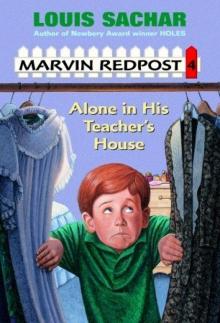 Alone in His Teacher's House
Alone in His Teacher's House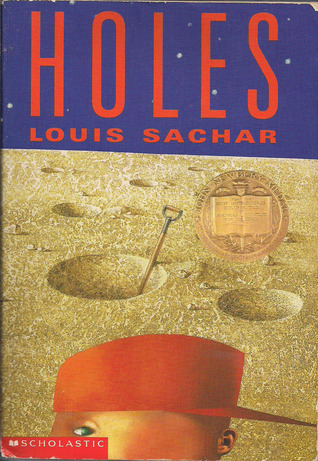 Holes
Holes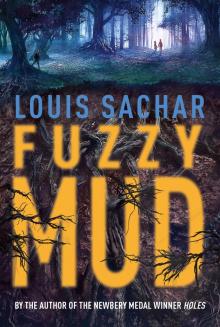 Fuzzy Mud
Fuzzy Mud More Sideways Arithmetic From Wayside School
More Sideways Arithmetic From Wayside School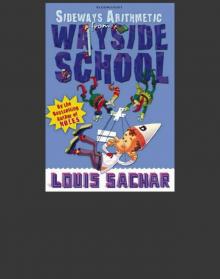 Sideways Arithmetic From Wayside School
Sideways Arithmetic From Wayside School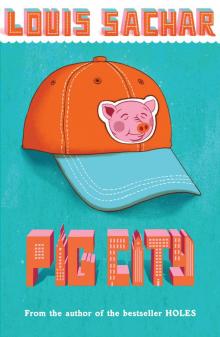 Pig City
Pig City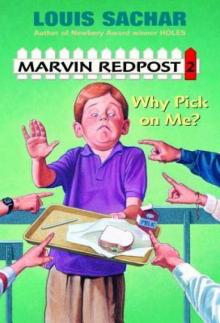 Why Pick on Me?
Why Pick on Me?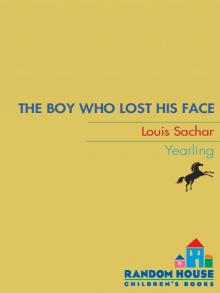 The Boy Who Lost His Face
The Boy Who Lost His Face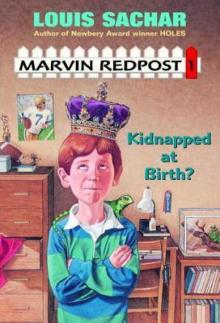 Kidnapped at Birth?
Kidnapped at Birth?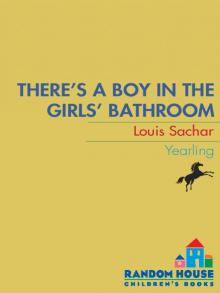 There's a Boy in the Girls' Bathroom
There's a Boy in the Girls' Bathroom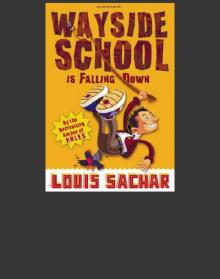 Wayside School Is Falling Down
Wayside School Is Falling Down Stanley Yelnats' Survival Guide to Camp Green Lake
Stanley Yelnats' Survival Guide to Camp Green Lake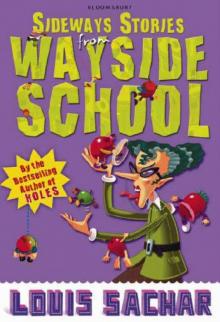 Sideways Stories from Wayside School
Sideways Stories from Wayside School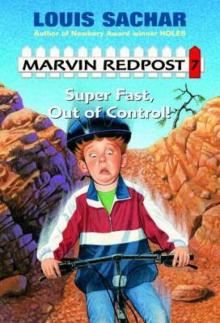 Super Fast, Out of Control!
Super Fast, Out of Control!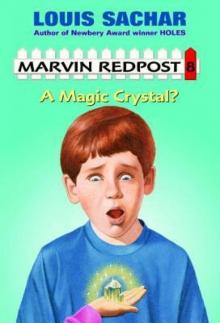 A Magic Crystal?
A Magic Crystal?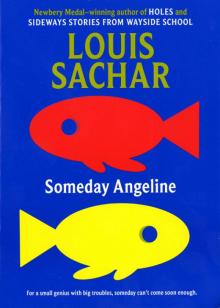 Someday Angeline
Someday Angeline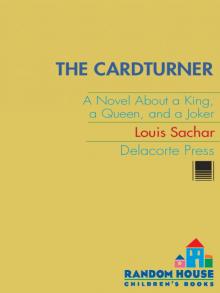 The Cardturner: A Novel About Imperfect Partners and Infinite Possibilities
The Cardturner: A Novel About Imperfect Partners and Infinite Possibilities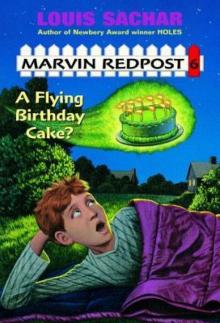 A Flying Birthday Cake?
A Flying Birthday Cake?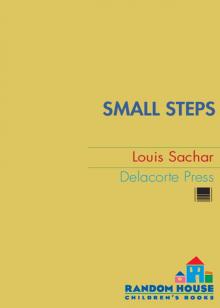 Small Steps
Small Steps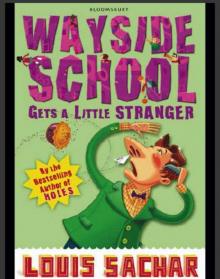 Wayside School Gets a Little Stranger
Wayside School Gets a Little Stranger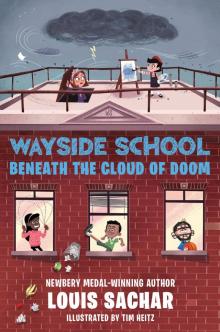 Wayside School Beneath the Cloud of Doom
Wayside School Beneath the Cloud of Doom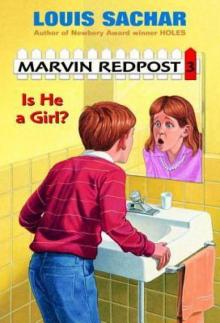 Is He a Girl?
Is He a Girl? Dogs Don't Tell Jokes
Dogs Don't Tell Jokes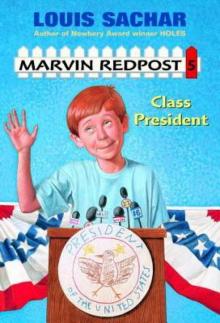 Class President
Class President Kidnapped at Birth
Kidnapped at Birth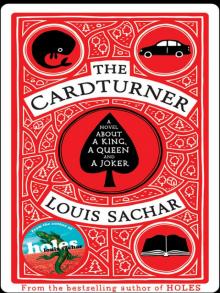 The Cardturner
The Cardturner Stanley Yelnats' Survival Guide to Camp Greenlake
Stanley Yelnats' Survival Guide to Camp Greenlake